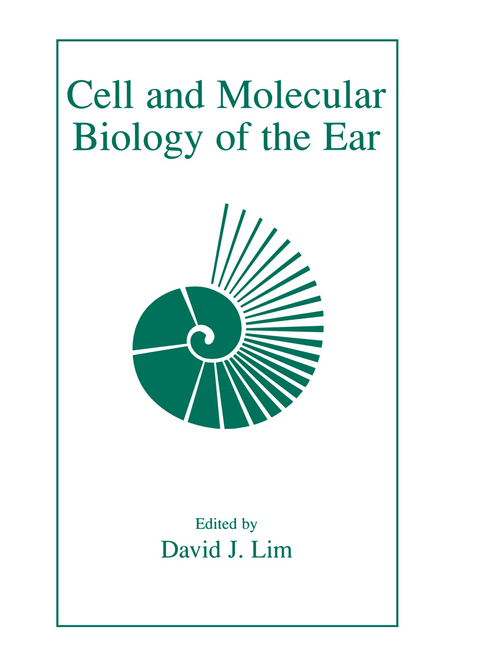
Cell and Molecular Biology of the Ear
Springer-Verlag New York Inc.
978-1-4613-6896-0 (ISBN)
I. Mechanoreceptor Biology.- 1. Kinociliary Mechanoreceptors in the Equilibrium Receptor Organs of Cephalopods.- 2. Stereocilia Based Mechanoreceptors of Sea Anemones.- 3. Plasma Membrane Ca2+-ATPase and Hair-Cell Function.- 4. Molecular Determinants of Hair Cell Phenotypic Heterogeneity—Differential Expression of K Channel Genes.- 5. Structural Basis of Outer Hair Cell Motility or Where’s the Motor?.- II. Developmental Biology of the Ear.- 6. Induction of Ectodermal Placodes.- 7. Compartments and Boundaries in the Developing Inner Ear.- 8. Role of the POU-domain Transcription Factor Brn-3.1 in Hair Cell Development.- III. Genes and Deafness.- 9. Genetic Linkage Studies of Hereditary Hearing Loss.- 10. Mitochondrial Mutations and Hearing Loss.- 11. Loss and Regeneration of Cochlear Hair Cell Innervation following Sound and Drug Damage.- 12. Mechanism and Prevention of Aminoglycoside-Induced Hearing Loss.- 13. Neurotrophic Signaling by Membrane Electrical Activity in Spiral Ganglion Neurons.- 14. Protection of Cochlear Hair Cells from Gentamicin Ototoxicity and Mechanisms of Mammalian Hair Cell RegenerationIn Vitro.- 15. Protection and Regeneration of Vestibular Hair Cells—The Role of Neurotrophins after Gentamicin Ototoxicity.- IV. Gene-Based Therapy for Sensorineural Hearing Loss.- 16. Inner Ear Gene Therapy.- 17. Adeno-Associated Virus Mediated Gene Transfer in the Peripheral Auditory System.- 18.Herpes SimplexViral Vector Gene-Based Therapy to Prevent Loss of Auditory Sensory Cells from Stress-Induced Apoptosis.- Contributors list.
| Zusatzinfo | XVIII, 267 p. |
|---|---|
| Verlagsort | New York, NY |
| Sprache | englisch |
| Maße | 178 x 254 mm |
| Themenwelt | Medizin / Pharmazie ► Physiotherapie / Ergotherapie ► Orthopädie |
| Studium ► 1. Studienabschnitt (Vorklinik) ► Anatomie / Neuroanatomie | |
| Studium ► 2. Studienabschnitt (Klinik) ► Humangenetik | |
| Studium ► Querschnittsbereiche ► Prävention / Gesundheitsförderung | |
| Naturwissenschaften ► Physik / Astronomie ► Angewandte Physik | |
| Technik ► Medizintechnik | |
| ISBN-10 | 1-4613-6896-0 / 1461368960 |
| ISBN-13 | 978-1-4613-6896-0 / 9781461368960 |
| Zustand | Neuware |
| Haben Sie eine Frage zum Produkt? |
aus dem Bereich


